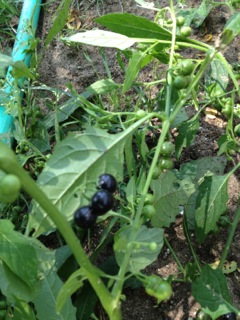Plants toxic to horses: Eastern Black Nightshade
Good pasture management is key to limiting toxic plants.
With fall upon us,, and many summer pastures eaten down to very little good quality grass and forage, it is important for horse owners to regularly inspect their pastures and dry lots for potentially toxic weeds or wilted leaves. According to Michigan State University Extension, horses have an innate need to graze and will often look for something green to graze. Unfortunately, this can be a deadly choice for these animals. One example of a potentially dangerous plant is the Eastern Black Nightshade.
Eastern Black Nightshade commonly grows annually in dry, sandy soil in the eastern U.S, and is a member of the Solanum family. The level of toxicity depends on the maturity of the plant, other growing conditions and level of intake, but it appears that the plant and unripened berries may be extremely dangerous to grazing animals. According to the University of Illinois Veterinary Medicine Library, toxic symptoms vary in animals and may range from sudden death to three to four days of illness that culminates in death or recovery. The nervous system effects include apathy, drowsiness, depression, confusion, progressive muscular weakness, numbness, dilated pupils, trembling, labored breathing, nasal discharge, rapid heartbeat, weak pulse, bradycardia, central nervous system depression and incoordination; it is often accompanied by paralysis of the rear legs. A coma may occur without other nervous signs.
The plant has small white, star shaped flowers as well as green berries that ripen to black or dark purple. Animals should be kept out of fields or lots with heavy infestation of nightshade. Plants should be pulled up or mowed when flowering and burned. In addition, good pasture management practices may limit the growth of invasive species and toxic plants.



 Print
Print Email
Email




